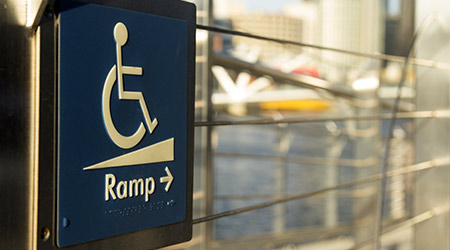
ADA Issues Remain for University
October 9, 2018
Compliance with the Americans with Disabilities Act (ADA) continues to challenge institutional and commercial facilities, despite the fact that the law was enacted nearly 30 years ago. While many of the challenges exist inside facilities, managers also must contend with exterior accessibility issues. Consider the case of the University of Maryland.
Last fall, the university removed the vast majority of its pillars indicating handicap-accessible entrances to campus buildings. After pushback from campus advocates, they were re-installed this summer.
Now, according to The Diamondback, the university is planning to hire a consultant to survey this kind of signage on campus to determine whether more pillars are needed, university spokesperson Jessica Jennings wrote in an email.
University officials say the facilities management department removed the pillars — 47 of the 57 on the campus — because some were misleading. Others were damaged during snow removal and lawn maintenance, and their use across campus was inconsistent. Newer buildings didn't have any.
The department removed the pillars without warning the President's Commission on Disability Issues, which advises the administration on issues of concern to people with disabilities, commission officials say.
The funding needed to replace the pillars came from this university's landscape construction operations budget, Jennings wrote. It was a critical expenditure, says Ana Palla-Kane, one of the commission's chairs.
"Most of the buildings, their main entrances have stairs," Palla-Kane says. "If you don't have a lot of the knowledge of where you are going, it might take you 10 minutes to find the accessible entrance. That's why marking with the pillars is important."
This Quick Read was submitted by Dan Hounsell — dan.hounsell@tradepressmedia.com — editor-in-chief of Facility Maintenance Decisions, and chief editor of Facilitiesnet.com.
Next
Read next on FacilitiesNet












